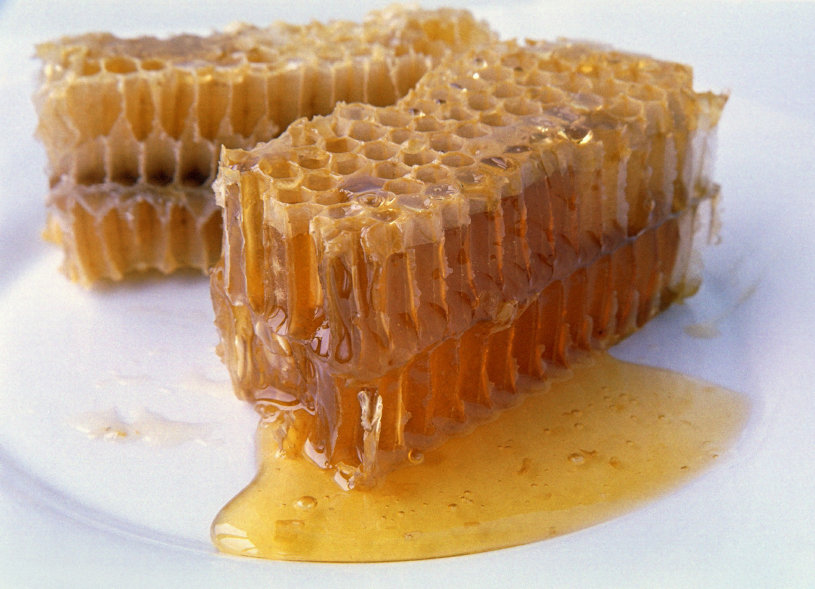I would venture a guess that most of us automatically grab for a tissue and blow like crazy when we can’t breathe through our nose. I mean, breathing is pretty important to our livelihood, yes? So getting rid of whatever bothersome thing that’s stopping the free flow of air becomes a pretty high priority, and a tissue seems to fit the bill—at least temporarily.
The thing is, I made an interesting discovery not so long ago that will greatly reduce the number of tissue boxes our family of five goes through. From now on, we’ll all be breathing easy, and quicker than you can say, “Mom! Where are the tissues?”
Well, okay, it may take a little longer than that. And no one will be asking for tissues. The new question around our house will sound something like, “Mom! Where’s that honeycomb wedge?” That’s right. Honeycomb clears a nose much better—and for much longer—than your run-of-the-mill tissue. Amazing!
Here at Selene River Press, you can find several interesting articles about the benefits of raw honey and the life of the honeybee. These are definitely worth taking the time to read. But I discovered the stuffy nose/honeycomb gem in the book Folk Medicine: A New England Almanac of Natural Health Care from a Noted Vermont Country Doctor, by D.C. Jarvis, MD. Ironically, I was reading this very book in the car while waiting for our oldest son to finish his choir dress rehearsal. As soon as he climbed in, he started complaining about being stuffed up. So I said, “Hey, wanna try a tasty remedy for that?” Since he has a bit of a sweet tooth, he agreed without hesitation. We ended up driving right to our local health food store to find a hunk of honeycomb.
But let’s back up. What did Dr. Jarvis say about honeycomb and nasal passages back in 1958, when his book was first published? In the chapter titled “The Usefulness of Honey,” he discusses two different patients who came to his office because they’d been having difficulties breathing through their noses for quite some time. Dr. Jarvis kept a piece of honeycomb right there in his office, and after breaking off a piece and chewing on it for just five minutes, these patients were already breathing much easier. After comparing the mucous membranes in their noses before and after they chewed the honeycomb, he saw a marked change in appearance, from “very pale and boggy” to “light pink.” The honey seemed to act as a shrinking agent for the membrane, opening up the nasal passages and allowing the patients to breathe freely. Fascinating! As I read about it, I thought to myself, “I’ll have to remember this the next time one of us is stuffed up.” How funny that the “next time” would be just a few minutes later.
Once we arrived home with our first container of honeycomb, I cut a wedge for my son and told him to start chewing. He popped it in his mouth, smiled, and uttered, “Mmm.” Sure enough, minutes later the wax was pretty much stuck all over his teeth, but there was a huge improvement in his ability to breathe through his nose. Super cool!
Soon after, he asked if he should chew on another piece to get rid of the stuffiness for good. But knowing him as well as I do, I had to consider if this was just my son craving sweets or if he actually needed it. After all, I want my boys to pay attention to what their bodies need, and I try to instill in them the importance of intuition when it comes to their health. I suggested he hold off but told him to let me know later if he thought he’d benefit from another round. He didn’t ask again until the next morning, and wouldn’t you know it, the same thing happened—all clear within minutes.
So, remember that honey is antibacterial, antiviral, antifungal, and loads of other anti’s. Don’t forget to reach for it when you have a stuffy nose or any other issues with your breathing tract. Slathering a daily dose on your toast or spooning some into your tea can have some pretty awesome preventative effects, too. But make sure it’s the good stuff—raw, for sure. And local, whenever possible.
Have you ever used raw honey in an unexpected way to improve your overall health?
Photo from iStock/Mike_Kiev



